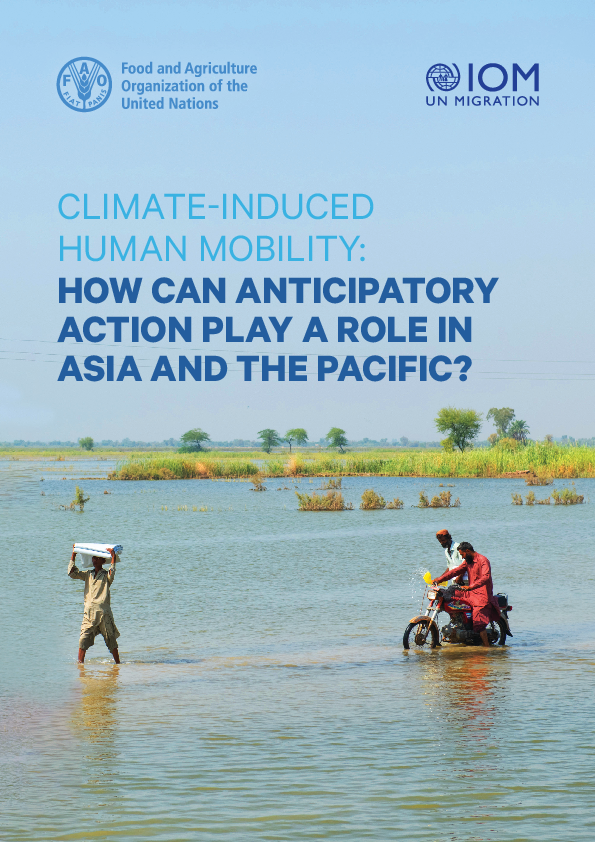-
Countries
-
Data and Analysis
-
Special Focus
-
Crisis Responses
Climate-induced human mobility: How can anticipatory action play a role in Asia and the Pacific?
In Asia and the Pacific, human mobility, including both migration and displacement, due to disasters caused by natural hazards is at an all-time high and is set to rise significantly in the coming decades due to climate change. The region has consistently accounted for the largest share of global disaster displacement with record heights over the last few years.
Over the past 10 years, disasters have caused 225.3 million internal displacements in the region, representing around 78 percent of the global total (IDMC, 2022a). Disasters caused by hazards such as typhoons, floods, earthquakes and volcanic eruptions were the main drivers, resulting in 13.7 million new displacements in 2021 alone and constituting 58 percent of the global total for disaster displacement (IDMC, 2022b). This resulted in the highest level of disaster displacement the region has ever recorded, exceeding the decade-long average of 11.6 million (IDMC, 2022b).
These alarming numbers highlight a trend that is only growing and intensifying as the climate crisis deepens. It further showcases a gap where more needs to be done to protect and mitigate the impact of natural and human-induced hazards on these particularly vulnerable populations.
There is growing evidence that acting prior to the onset of a predictable shock is significantly more effective, faster and more dignified than traditional humanitarian response. This is what is known as anticipatory action. It links early warnings to pre-emptive actions designed to protect communities and their assets. However, while the approach has gained prominence and is becoming a staple in the disaster risk management (DRM) toolbox, its link to human mobility contexts remains relatively unexplored, despite the strong relationships between climate hazards, displacement and climate-induced migration. This paper, combining the efforts of the Food and Agriculture Organization of the United Nations (FAO) and the International Organization for Migration (IOM), aims to fill this gap and examine opportunities to integrate a human mobility lens within anticipatory action

